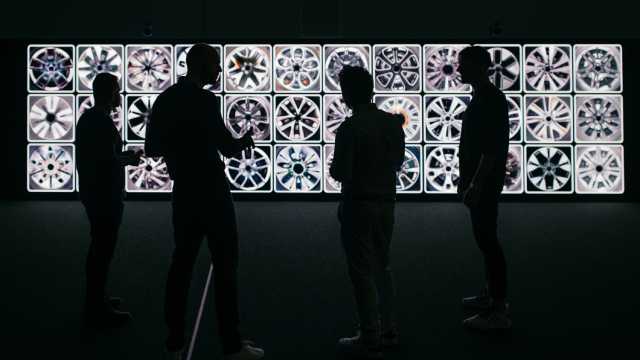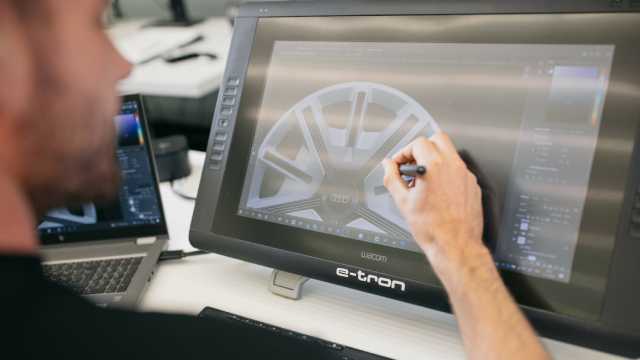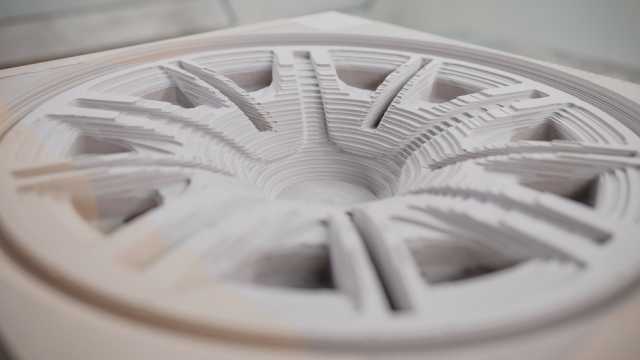Audi puts artificial intelligence and software at the service of design
Audi brings artificial intelligence into design with FelGAN, an internally developed software that provides new sources of inspiration for the creative process.
The transformation journey from car manufacturer to data-driven company also includes leveraging artificial intelligence in all processes, such as in design, where Audi has implemented the use of FelGAN AI software. Designers are always looking for new inspiration, and in this case the innovation concerns the team that designs alloy wheels at the Audi Design Studio in Ingolstadt.
When it comes to style, thinking outside the box is a great theory but not always easy to put into practice, because in the creative process people tend to focus on what is familiar to them. This is precisely where the artificial intelligence-based software FelGAN, developed in-house by Audi's IT department in collaboration with Audi Design, comes in.

Unlimited ideas
With FelGAN, designers can draw from a practically unlimited pool of ideas, because thanks to the software they can discover new shapes from new perspectives, deriving useful insights for their creations.
In concrete terms, FelGAN works in two ways: it quickly proposes a large number of realistic simulations, or it recombines existing designs in a targeted way. Thus the system becomes a kind of spontaneous idea hub for Audi’s rim design team, allowing designers to easily experiment with shape, color, surface texture and other parameters in real time.
Generator and discriminator
The name "FelGAN" is a mash-up of the German word for rim (Felge) and "GAN," an acronym for Generative Adversarial Networks. GANs are a special form of self-learning computer program in which two algorithms compete as opponents during the so-called training, constantly improving through competition with each other.
One of the two algorithms, the "generator," creates artificial images of a specific motif, while the "discriminator," which is the competitor, sees a selection of images, consisting of those created by the generator mixed with real wheel images. At this point the discriminator decides whether each image is a creation of the generator or it is real, and the process is repeated again and again until the training is completed.

Training
Both algorithms are designed to learn from their mistakes and improve continuously. After enough runs, the images created by the generator are so deceptively real that even the human eye cannot, or can only barely, distinguish them from real photos. The application's user interface is intuitive and based on Streamlit technology: it creates short development cycles and quick feedback between the design and IT team.
The AI application components run in the cloud since they require a lot of computing power; thus, designers do not have to rely on high-performance local hardware when using the software solution. Another advantage of FelGAN is that the software assigns a mathematical value to each design made by the AI. These values, which the developers call DNA, can be used at any time to reproduce designs.

From virtual to real
Audi designers can also feed the program with their own designs and photos, adding them to the virtual experimental surface. At this point special algorithms determine an appropriate DNA value for the images entered by the designers. Often, designers use only individual elements from FelGAN's creations, refining them harmoniously into the overall design.
At this stage, creativity, professional experience, and mastery of the tools of the trade play a decisive role. Finally, Audi experts turn the virtual design into reality by producing a prototype of the wheel, either in plastic or aluminum, using a high-tech milling machine.
The value of data
FelGAN was developed and implemented in an entirely in-house collaboration between Audi’s IT and design departments. The company is thus demonstrating its expertise in software and artificial intelligence. "In the modern age, data bring immense added value for companies and their employees. Audi has committed to the goal of becoming a data-driven company and will use artificial intelligence in many departments to this end. This is why our data team is always looking for new technologies", explains Thomas Knispel, Head of Machine Learning & Data Science at Audi.
In the future, the technology behind FelGAN could be expanded into a comprehensive AI design platform available to designers in different departments. Furthermore, Audi is developing an AI rating system in which each rim generated by FelGAN will be assessed in relation to its carbon footprint.
Source: AUDI AG
VGI | Responsible OU: VP | Creation date: article date | Class 9.1
